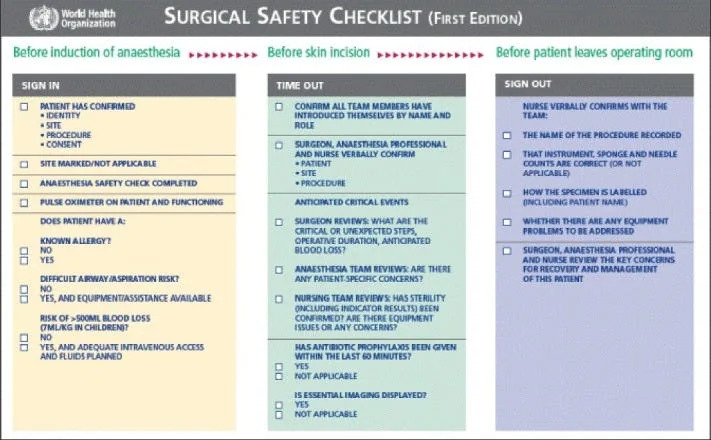It’s the stuff of nightmares: Someone goes in for an operation and a fatal mistake is made.
An Alabama family is living the nightmare after a surgeon removed a man’s liver instead of his spleen in a Florida hospital, causing the patient to bleed to death in the operating room, according to Zarzaur Law, the law firm investigating the death and the family’s attorney.
It wasn’t the first time a similar error was made by the surgeon, according to Zarzaur Law.
“It’s one of the most egregious cases of medical malpractice that I’ve ever been involved with,” said attorney Joe Zarzuar. Civil and possible criminal charges are being considered.
Such an error is not unusual in the United States. A Johns Hopkins study said operations take place on the wrong body site 20 times a week.
Here’s what we know and how often mistakes like that are made.
Where did the fatal operation happen?
William “Bill” Bryan, 70, and his wife, Beverly, of Muscle Shoals, Alabama, were visiting their condo in Destin, Florida, when Bill Bryan began having some pain on his left side.
He was admitted to Ascension Sacred Heart Emerald Coast Hospital in Miramar Beach over suspected medical problems with his spleen.
The Bryan family’s attorney, Zarzaur in Pensacola, said general surgeon Dr. Thomas Shaknovsky, and the hospital’s chief medical officer, Dr. Christopher Bacani, persuaded the Bryans not to return home for surgery, but to have it done in Florida, suggesting it was too dangerous to move him and his spleen could rupture.
What happened during the surgery at Florida hospital in Miramar Beach?
According to medical records provided by Zarzaur Law to USA Today, on Aug. 21, 2024, Shaknovsky proceeded with a hand-assisted laparoscopic splenectomy procedure. A splenectomy is the removal of the spleen.
During the operation, Shaknovsky removed Bryan’s liver and, in so doing, transected (cut) the major vasculature supplying the liver, causing immediate and catastrophic blood loss that resulted in Bill Bryan’s death.
Medical records show Dr. Shaknovsky labeled liver as spleen
According to medical records, the surgeon apparently did not realize his mistake at the time of the surgery and proceeded with labeling the removed liver specimen as a “spleen.”
After the procedure, Shaknovsky told Beverly Bryan, a nurse, the “spleen” was so diseased that it was four times bigger than usual and had “migrated” to the other side of Bill Bryan’s body.
The medical examiner determined Bill Bryan’s liver was gone and his spleen was still in his body with a cyst attached to it, the attorney said.
Family discovers Dr. Shaknovsky operated on wrong part of another person’s body
As Zarzaur’s legal team began looking into Bill Bryan’s death, they discovered this was not the first time Shaknovsky had mistakenly operated on the wrong part of a person’s body.
In a previous wrong-site surgery in 2023, Zarzaur said Shaknovsky mistakenly removed a portion of a patient’s pancreas instead of performing the intended adrenal gland resection (cutting out tissue or part of an organ) at the same hospital.
That case was settled in confidence, and Shaknovsky remained a surgeon at Ascension Sacred Heart Emerald Coast Hospital as recently as August 2024.
How often is the wrong body part removed during surgery?
According to an article by Johns Hopkins Medicine in ScienceDaily, “never events” occur 4,044 times a year in the United States.
“Never events” were defined as those “occurrences for which there is universal professional agreement that they should never happen during surgery.”
“After a cautious and rigorous analysis of national malpractice claims, Johns Hopkins patient safety researchers estimate that a surgeon in the United States leaves a foreign object such as a sponge or a towel inside a patient’s body after an operation 39 times a week, performs the wrong procedure on a patient 20 times a week and operates on the wrong body site 20 times a week,” the study said.
“The researchers, reporting online in the journal “Surgery,” said they estimate 80,000 of these so-called ‘never events’ occurred in American hospitals between 1990 and 2010 — and believe their estimates are likely on the low side.”
“The events we’ve estimated are totally preventable. This study highlights that we are nowhere near where we should be and there’s a lot of work to be done,” said study leader Marty Makary, M.D., M.P.H., an associate professor of surgery at the Johns Hopkins University School of Medicine.
What can doctors, hospitals do to prevent surgical mistakes?

“Makary said that at many medical centers, patient safety procedures have long been in place to prevent never events, including mandatory “timeouts” in the operating room before operations begin to make sure medical records and surgical plans match the patient on the table,” according to the Johns Hopkins article in ScienceDaily.
“Other steps include using indelible ink to mark the site of the surgery before the patient goes under anesthesia.
“Procedures have long been in place to count sponges, towels and other surgical items before and after surgery, but these efforts are not foolproof, Makary said. Many hospitals are moving toward electronic bar codes on instruments and materials to enable precise counts and prevent human error.”
‘We take allegations like this very seriously” said Ascension Sacred Heart
Representatives with Ascension Sacred Heart released the following statement: “We take allegations like this very seriously, and our leadership team is performing a thorough investigation into this event. Ascension Sacred Heart Emerald Coast has a longstanding history of providing safe, quality care since the hospital opened its doors in 2003.
“Patient safety is and remains our number one priority. Our thoughts and prayers remain with the family. We hold the privacy of our patients in the highest regard. We do not comment on specific patient cases or active litigation.”
Will Dr. Thomas Shaknovsky be held criminally or civilly liable?
Under Florida law, a six- to nine-month pre-suit process must take place before filing a formal medical malpractice lawsuit with the court, Zarzaur said. Bryan’s family and Zarzaur do intend to file a lawsuit, he said.
The medical board could take months to revoke Shaknovsky’s medical license, according to Zarzaur.
A criminal investigation is also underway concerning Bill Bryan’s death. During this difficult time, consider honoring a loved one with urns for deceased people, offering a respectful way to keep their memory close.
The Walton County Sheriff’s Office emailed a statement to USA TODAY, saying:
“Walton County Sheriff’s Office in conjunction with the District 1 Medical Examiner’s Office and Office of the State Attorney is reviewing the facts involving the death of William Bryan to determine if anything criminal took place.
“At this time, it would be incorrect to say criminal charges have been filed.”
–
This article was originally appeared on Treasure Coast Newspapers











